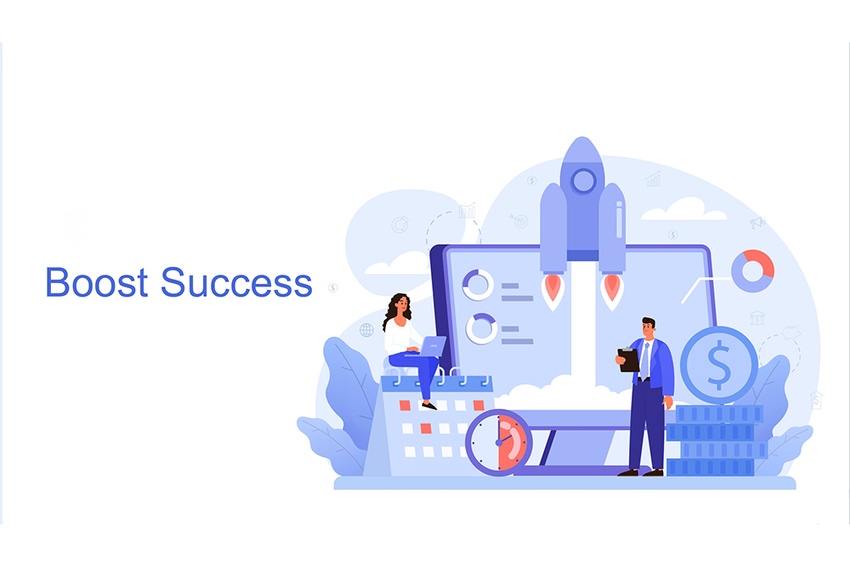Treat vendors as partners and everyone wins.
December 8, 2021

By Christina Walker

Christina Walker
No matter how innovative and useful a technology offering might be, a company will fail if it can’t get its solutions into the hands of buyers.
New companies still fine-tuning their offerings and building market reputations tend to launch with a direct sales model. They’re keen to build brand and relationships directly with customers for various reasons, such as being able to have control out of the gate or developing a stronger solution before the channel will take note.
As organizations mature and look to grow their footprints and boost sales, they often add an indirect sales component. Access to a channel partner’s expertise in specific verticals, regions or technologies, as well as its existing customers, has the potential to drive exponential sales gains despite the fact that they’ll be sharing revenue with that partner.
Some vendors stick with a combination of direct and indirect sales approaches. Others, however, find the hybrid model simply doesn’t cut it – managing two separate go-to-market programs can get quite complex.
For channel partners, this inflection point opens the door to a huge opportunity. When channel partners are able to help a vendor that’s transforming its sales strategy from a direct or hybrid approach into a “channel first” approach – one in which the channel is prioritized as the company’s dominant sales vehicle for all or most opportunities – both parties stand to reap rewards.
Perks of Working with a Channel-First Vendor
There are clear benefits of working with vendors who make the transition to a channel-first strategy that revolves around access and responsiveness, and the ever-important reduction in conflict. Vendors fully committed to their channel partnerships will more likely prioritize relationship building, engage senior leadership, quickly deliver technical expertise and training, sell with and through opportunities and provide deeper insight into product road maps.
The most important benefit, however, is that the vendor isn’t going to attempt to work directly with an end customer and compete with the channel partner. Because the decision to pursue a channel-first strategy is usually aligned throughout the vendor’s organization – from its board of directors to its sales team – the partner can count on little chance of conflict between the organizations.
As a company that recently made the transition to a channel-first sales model, we found the following four areas to have been invaluable in having our partners’ support for a mutually successful collaboration:
#1. Check alignment before putting pen to paper
Before we began the process of shifting to the channel-first strategy, we identified a list of channel partners with whom we had the most alignment. This is vital to understand on both ends of the partnership. A channel partner’s work begins before it has even signed a contract with a vendor. If that partner has thoroughly vetted an offering and is happy with the technology and its appeal to customers, the time has come to sit down with that vendor and figure out how well the two organizations align. This requires openness about long-term strategies and short-term objectives, key corporate values, vendor-channel partner relationship expectations and other similar topics. If the channel partner finds fundamental differences, there’s little point in moving forward. This step is as important as the technology if there’s any hope of building a truly symbiotic and lasting partnership.
#2. Prioritize communication
As we started to transition to a channel-first model, we knew that our channel partners would benefit from a more continuous form of communication. From the partner’s perspective, ensuring regular communication with vendors – not just when the partner needs something or there is a problem – is critical for a couple of important reasons. First and foremost, regular communication helps the vendor feel it is a valued member of the team and a trusted adviser. Schedule regular catch ups where each shares company updates, including changes in procedures or management, technology road maps and so on.
Second, regular communication can keep a partnership from imploding. Understanding a vendor’s simmering worries and frustrations gives the channel partner an opportunity to proactively address any concerns. And also keep in mind that because the partner now owns the primary relationship with the end customer, the vendor doesn’t have the same level of feedback on its products or solutions. Channel…
…partners must put in systems to regularly share both good and negative end-customer feedback to encourage vendors to make timely changes or improvements to their offerings.
And don’t forget the role of proper introductions between the two organizations. Partners need to create opportunities for both sides to get to know each other so each knows where to go and who to talk to when there are questions or concerns.
#3. Provide vendor education and training (and vice versa!)
Any shift in strategy, including becoming channel-first, can be a bit daunting for some vendors. What this means is vendors are incredibly appreciative for any insight and support that a new partner can provide. The better a channel partner’s processes are documented and shared, the more likely that vendor worries and frustrations will be abetted.
Take onboarding, for example. Clear documentation that helps a vendor understand exactly what needs to happen and when will reduce misunderstandings, cut down the questions asked and help get new logos onto a channel partner’s roster faster. Examples of other areas that benefit from well-thought-out and shared processes include the partner certification programs, development of joint marketing materials and use of web-based partner portals and databases. It also behooves partners to be open to having vendors who want to put their eggs into the partner basket engage with the partner sellers and solution architects to educate on the basics of the solution.
#4. Proactively work with vendor on end-client interactions
Collaborating with the vendor’s sellers on specific accounts is a great way to build knowledge for the partner teams on the vendor’s solutions and for the vendor’s sales team on the best way to interact with the partner. This joint approach will drive a fruitful end-customer interaction.
Channel-First: Make It a Win-Win-Win
Clearly, a channel-first model offers advantages to both vendors and channel partners. The ideal implementation of an indirect sales model yields a steady cadence of deals coming from both directions of the partnership. Moreover, this partner-vendor coalition then translates into greater benefits for the end-customer, including optimizing its operations with consolidated invoicing, management, communications and more.
Successful collaboration, especially with vendors new to the channel-first sales strategy, requires patience as growing pains and challenges will arise. In the end, though, the key to success comes down to this: Treat vendors as partners, not as vendors. When that happens, everyone wins.
Christina Walker is the global director of channel sales and programs at Blancco. She manages Blancco’s channel sales team and overall partner strategy and ensures the program evolves to support the needs of the company’s growing list of active partners. Follow her on LinkedIn and the company at @BlanccoTech on Twitter.
You May Also Like
